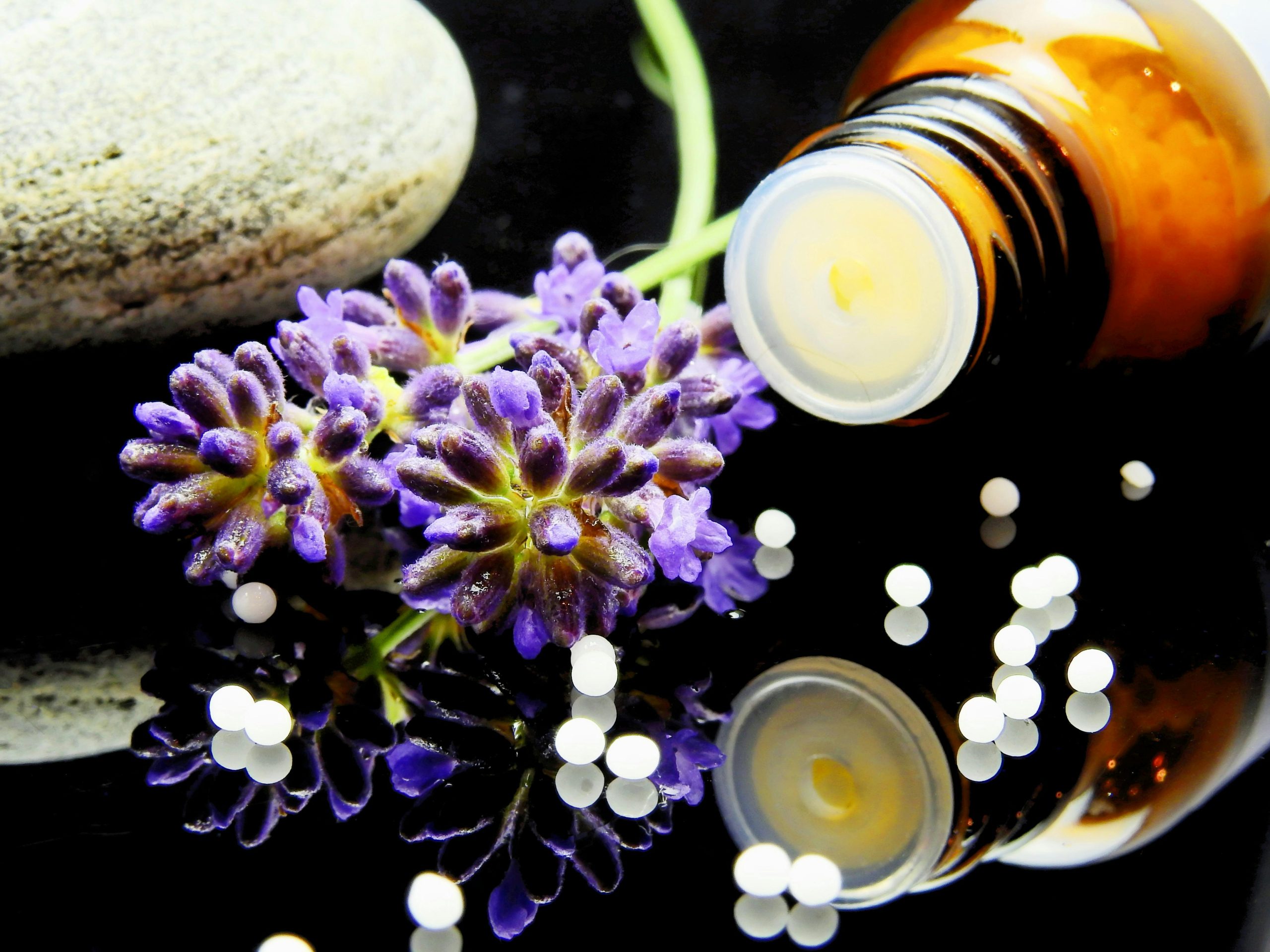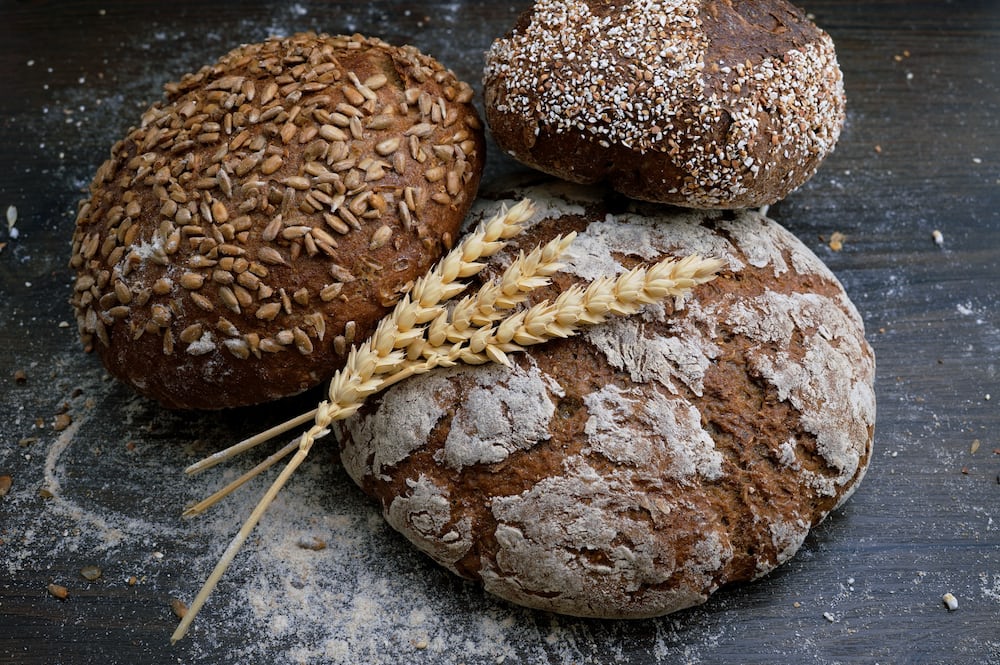read more posts by
Nikki
My worst nightmare: waking up to the sound of our 6-month-old gasping for air. We had recently relocated 2 ½ hours away from our families for my husband’s job and also had a 1 ½-year-old at the time. We all packed into our minivan at two in the morning and rushed to the emergency room. Diagnosis: croup. With her oxygen levels low, we were admitted overnight until the steroid kicked in and her oxygen levels stabilized.
I wish that had been the last time I had to hear that sound and relive that panic, but with the addition of two more babies, it soon became our new normal. Desperate to stay out of the ER and off of steroids, I began searching for alternative health options. Have you been there before, mama? If this feels all too relatable, let me introduce you to what quickly became our saving grace, homeopathy.
Not going to lie, I was skeptical at first. How could these little sugar pellets that dissolve in your mouth actually work? But with absolutely nothing to lose, I gave it a try—and to my elated surprise, we never had to make another trip to the emergency room for croup. I was hooked!
So, What is Homeopathy?
If you’ve never heard of homeopathy, let me give you a quick rundown of what it is and how it works.
Homeopathy is one of the most widely used health systems in the world. It is prevalent in countries like India, Europe, and South America and has recently seen a revival in the U.S.
Developed by Samuel Hahnemann over 200 years ago, homeopathic remedies are safe, gentle, and effective for the whole family. That means babies, pregnant women, and even pets can use homeopathy without the fear of harmful side effects. It is also affordable and easily accessible, with most remedies available for $7–$10 on Amazon.
How Does It Work?
Homeopathy uses highly diluted yet potent substances derived from plants, minerals, and animals. Each remedy is chosen based on the principle of “like cures like.”
By matching your symptoms with the remedy that would cause similar symptoms in a healthy person, homeopathy stimulates the body’s natural healing response.
For example, the remedy Apis is made from highly diluted bee venom. Since a bee sting causes redness, swelling, and burning pain, using Apis can help treat someone experiencing inflammation and swelling, such as an allergic reaction or hives.
Our Experience with Homeopathy
Since those first days of using homeopathy for croup, we’ve used remedies to help with anything from colds, the flu, strep, fevers, and coughs to pain management, healing after tooth extractions, bumps, bruises, and bug bites. The ways in which homeopathy can support your family’s health journey are truly endless.
Where to Start?
As I mentioned before, homeopathy has recently seen a revival among people looking for ways to heal rather than just mask symptoms. Because of this, new resources are popping up every day to help you learn and apply homeopathy for your own family. Below, I’ll list some of my favorite resources that have helped us along the way.
First off, I highly recommend getting yourself a homeopathy kit. THIS ONE is my favorite and is perfect for beginners because it includes some the top remedies you’ll use for your family!
For educational resources here are some of my favorite teachers and homeopaths:
- Paola Brown – Paola is one of the biggest advocates of homeopathy. She is a wealth of knowledge with the biggest heart. She personally created a homeopathy curriculum that I’m excited to go through with our own family, and she offers many other valuable resources including an amazing Momeopath Circle group created for moms who love homeopathy. Currently, she is leading legislative efforts to protect our rights to freely use homeopathy in the U.S., as it has faced increasing challenges in recent years.
- RMDY Collective is dedicated to promoting holistic education in homeopathy. Their mission is to empower individuals to become skilled healers, fostering a community of people who believe in homeopathy’s transformative power. They offer homeopathic products, such as remedies, first aid kits, and accessories, and provide educational resources to support the practice of homeopathy. Additionally, RMDY Collective is committed to advocating for the protection of homeopathy rights and raising awareness of its benefits.
- The Homeo Mother, aka Marie. She provides practical, easy-to-understand guidance on using natural remedies for everything from emotional wellness to common childhood issues. Plus, she offers personalized consultations and a supportive community. It’s the perfect resource to help you confidently navigate homeopathy for your family!
I hope this gives you hope and encouragement if you, like me, have been searching for a better way to support your family’s health. I’ll be sharing more of my favorite alternative resources in future posts that have helped our family stay healthy and heal quickly over the years. And in the meantime, feel free to message me if you have any questions!
Hugs,
Nikki
Earlier this year, I was looking for a way to help our family financially while still being able to be home and homeschool. I kept coming across YouTube videos of people making multiple six figures selling Print on Demand products, quitting their jobs, and creating passive income for their families and was intrigued!
So, this past January, I decided to dive in… and it’s been really crazy…in a good way!
If you’ve heard people say it’s too late to get into the POD world, let me explain why they’re wrong.
First of all, while there are new people getting into POD every day, just like with anything else, there are also people giving up and quitting every day.
In fact, with just under 200 sales, I’ve sold more items than 83% of other shops on Etsy 🤯
While there may be “a lot of shops out there,” how many are actually ACTIVE?
Secondly, do a quick search on YouTube, and you’ll find accounts of real people new to the POD world finding success as brand new shops! Or even search Etsy itself! Find listings that are Best Sellers or have 20+ in carts and see when they started their shops. It’s inspiring finding shops that have started within the past few years and have made hundreds and thousands of sales!
And lastly, from my own experience, I can tell you that in the beginning, it may feel like it’s you against the POD world. But once you start you’ll find that it doesn’t matter how much competition is out there. There is room for everyone to find success selling POD!
In fact, the biggest factor that sets apart those who find success and those who don’t is a person’s willingness to keep going. If you continue to learn, grow, adapt, and ultimately believe you can succeed, eventually you will 🫶
It took me 10 months before my shop really started taking off. Now, in the last 6 weeks, I’ve had a 343% increase in sales! And I’m just getting started!
I’m also excited to share that if you want to start your own POD business but aren’t sure where to begin, I’ve made it really easy for you! Just CLICK HERE to grab my new guide that will help you jump-start into Print on Demand and even make it possible to open your own shop TODAY!
Rooting for you!
Nikki
New to the gluten and/or dairy free world? Overwhelmed on where to start? In this post we lay out 5 easy and actionable steps you can take to get started today. We hope you find encouragement and hope through this and by the end will be empowered to begin your journey! Whether you’re doing it for health reasons or to find healthier alternatives for yourself or your family, going gluten and/or dairy free doesn’t have to be hard. You can do this!
Step 1. Meal Prep

The most overwhelming part of this journey was trying to figure out what we COULD eat! Sounds silly, but the more research we did the more I realized that gluten is hidden in so many things! Barley, rye, wheat, malt, malt vinegar, spelt, bran, flour, graham flour, farina, durum, semolina, natural flavors, Vitamin E or tocopheryls, and glucose are all either other names for gluten or are derived from wheat which contain gluten. While this isn’t an exhaustive list of all the hidden names for gluten it gives a good look into how hard it can be to find gluten free foods. Yes, great, but now what? Well now we make a clean list. This list will include easy things we know are naturally gluten free such as fruits, vegetables, and meat. (Although be careful, some meats are processed using gluten containing ingredients. More on this in a minute.) Once you have your list make out a meal schedule for the next week or two. This should include breakfast, lunches, and dinners. By doing this it buys you time to do a little research and to shop for gluten free alternatives that you can incorporate in future weeks.
Step 2. Meal Inspiration

I don’t know about you, but I definitely do better with a little inspiration! My friend and fellow gluten and dairy free warrior, Victoria, has created an amazing website full of gluten and dairy free recipes to help you get started! In each recipe she even lays out the brands of gluten and dairy free ingredient alternatives she uses and recommends so it is another way to start your list of gluten and diary free brands to look for in the store! You can find her website here: www.eatingglutenanddairyfree.com.
Step 3. Where to shop?

Depending on where you live and what stores you have available, this next step will be easier or a tad bit trickier! Not to fret though, no matter where you live there are usually pretty good options when it comes to buying gluten and dairy free alternatives these days. Big chains that have a lot of gluten and dairy free options would be places like Whole Foods and Trader Joe’s. Since these stores are more than an hour away from us we usually stick to our local stores like Kroger and Meijer which have more and more products available each year. Another place we like, where we go to stock up and save money, is Costco. Their selection of healthier snacks for the kids has been really helpful…and who doesn’t love Costco?!
Step 4. Time to shop!

There are so many more options today for gluten free and dairy free alternatives than there were even 5 or 10 years ago with many more brands popping up each year! It’s also exciting to see more certified gluten free labels on items. While you should still do your homework and learn how to read labels, for the most part we trust these certified gluten free labels and it makes it much easier to find new foods we can have. This list is by no means exhaustive. These are just some of the everyday brands we use:
•Bob Red Mill’s gluten free flour and oats. (Their Baking 1 to 1 flour is great for making pancakes, waffles, and other baked goods.) Be careful with oats! Some may say they are gluten free but still contain traces of gluten. We trust Bob Red Mill’s oats. Overall Bob Red Mill’s is a great company and we love many of their products! Also, not all of their products are gluten free, so make sure they say gluten free on the packaging!
•Canyon Bakehouse Gluten Free Bread. We get it at Meijer but you can get it a lot cheaper at Costco.
•Speaking of Costco here are some of our favorite Costco finds: MADE GOOD Granola Minis, BOBO’s, Pure Organic layered fruit bars, That’s it fruit bars, Lotus Rice Ramen Noodles. Costco is always adding more and more products so check labels and have fun finding new treasures!
•For dairy free items we use Silk Almond Milk but there are other options too. Be careful of oat milks though. Some say gluten free but studies have shown that some still contain traces of gluten. We also use Earth balance butter, which is vegan, as our butter replacement. It comes in a spreadable container or as sticks for baking.
•Adding to our dairy free brands we also enjoy daiya products. Some of our faves from them are their dairy free Mac n cheese (yes, also gluten free!), their nacho sauce (sooo good!), and pizza!
•Again, look for the certified gluten free labels on products. This makes it much easier to know what products are actually gluten free because even if a product doesn’t have wheat on the label it could still contain it. (Ex. Maltodextrin, found in many processed foods, is often times derived from wheat.)
Step 5. You Got This!

Now that you have some gluten and dairy free alternatives it’s time to make another meal prep list. Start replacing ingredients you use in your meals such as applesauce instead of butter when baking, bone broth in mashed potatoes instead of milk, gluten free bread to make French toast. Once you find alternatives to your favorite meals add those new meals into your next week’s meal list and as you continue to find new alternatives your meal list will continue to grow. This is when things began to get a lot easier and less stressful for us!
Also, when it comes to finding gluten free alternatives I’ve found that a lot of popular foods have also added gluten free options. Our kids’ favorite example of this (although we don’t buy them often lol) would be Oreos! And can I just say that they recently came out with a mint version that tastes mighty similar to Thin Mints! With Girl Scout season among us this has been an exciting find for sure!
While there are many more things that you will learn on this journey I hope this is a starting point to help guide you to action and help give you a bit of relief. If there is something particular you’d like us to touch on in future posts let us know below. We’re here to help!
Keep growing,
Nikki and the RRC Family



